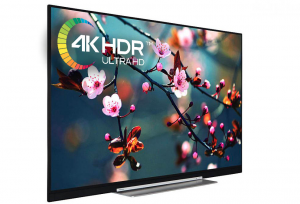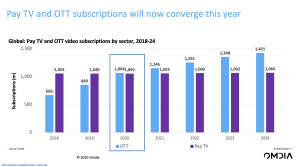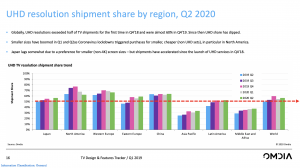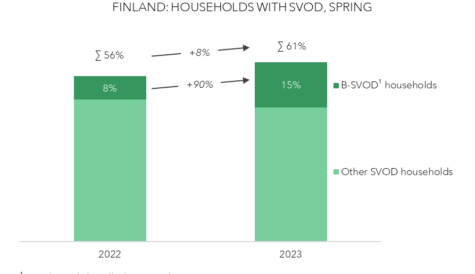
After more than 40 years of operation, DTVE is closing its doors and our website will no longer be updated daily. Thank you for all of your support.
Omdia: 4K TV sales on the up as OTT overtakes pay TV
 Sales of 4K TVs have continued to grow during the COVID-19 pandemic even as smartphone sales declined, and OTT has overtaken pay TV earlier than expected as a result of the crisis, according to María Rua Aguete, senior research director, media and entertainment, Omdia.
Sales of 4K TVs have continued to grow during the COVID-19 pandemic even as smartphone sales declined, and OTT has overtaken pay TV earlier than expected as a result of the crisis, according to María Rua Aguete, senior research director, media and entertainment, Omdia.
Speaking at the virtual 4K HDR Summit, Rua Aguete said that the number of OTT video subscriptions overtook pay TV this year, something that had not been expected but which had come to pass largely due to the COVID-19 pandemic.
 Expected OTT subscriptions will amount to 1.064 billion compared with 1.05 billion pay TV subscriptions at year-end, she said.
Expected OTT subscriptions will amount to 1.064 billion compared with 1.05 billion pay TV subscriptions at year-end, she said.
The likes of Disney+ and Netflix benefited massively, though not all boats rose on the back of lockdowns, with mobile video startup Quibi folding after six months, she said.
“This has been a very bad year,” said Rua Aguete, reversing many of the growth trends observed last year. However, one positive trend was seen in purchases of new TV screens. Smart TV sales have grown as set-top and mobile sales declined, she said.
There are about 557 million 4K enabled TV sets in homes compared with 0.62 million 4K-addressable smartphones and tablets, she said. 4K remains a TV-centric technology.
 While 4K sales have continued apace, there has been a switch during the pandemic towards sales of smaller non-4K TVs in many markets, meaning that the share of the total accounted for by 4K sets has dipped.
While 4K sales have continued apace, there has been a switch during the pandemic towards sales of smaller non-4K TVs in many markets, meaning that the share of the total accounted for by 4K sets has dipped.
She said Omdia expected 800 million 4K-enabled homes in 2024. That does not mean that all of these TV owners will have access to 4K content on them, however.
She said that Omdia expects smart TVs to more rapidly adopt integrated voice assistants, with penetration rising from 40%-60% by 2024.
Consumers are now prioritising where they spend money more carefully, with some devices benefiting and others losing out. Smartphone sales are still below 2019 levels, but TV technology sales are growing, which should benefit 4K UHD TV, said Rua Aguete.
4K shipments are “doing well”, she said, with over 50% of TVs shipped in many countries now being 4K. However, there is still room for growth: in Europe only 38% of homes now have a 4K TV set, and it will be two more years before that passes 50%. In the US, 52% of homes now have 4K sets.
“People are still buying TVs and most of those TVs today are 4K,” she said. “in terms of content it is a different story. Many people had hopes with the Olympics and live sports…but because of the delay in particular of the Olympics, many broadcasters delayed the launch of channels. People were also looking at the Olympics in 8K. That didn’t happen. NHK is having to think about what to do with that channel.”
Content remains a problem, with only 3-5% of titles available even in US catalogues being in 4K – even if that accounts for many new releases.
While the number of 4K channels is growing, launches have been delayed in part due to the delay of the Tokyo Olympics.
Western Europe is leading in the number of 4K HDR services on air. However, this year has not been conducive to launches of more channels in 4K.
She said 8K is likely to be lower than expected, with penetration of 8K TVs remaining under 0.1% around the world this year.


